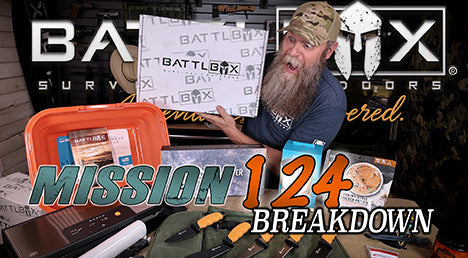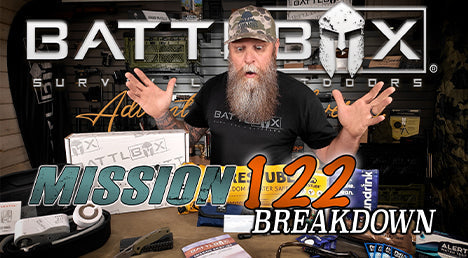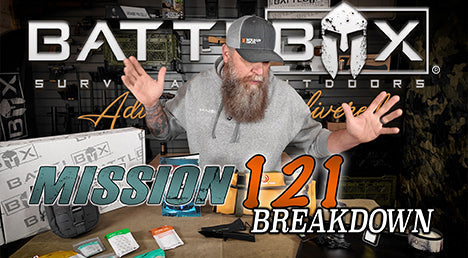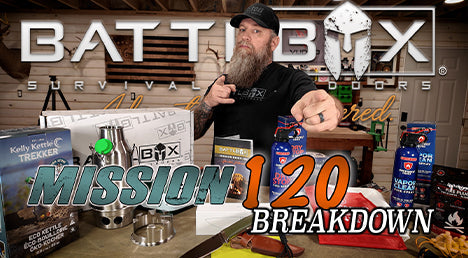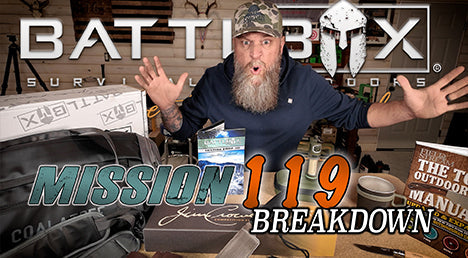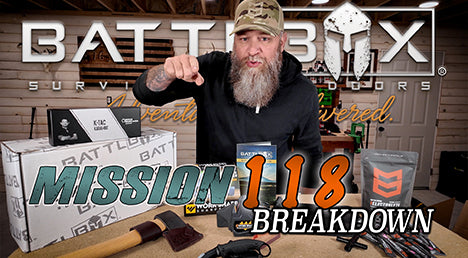Battlbox
What is the Best Backpacking Sleeping Pad? A Comprehensive Guide for Outdoor Enthusiasts
Table of Contents
- Introduction
- Understanding Sleeping Pad Types
- Key Features to Consider
- Top Backpacking Sleeping Pads of 2025
- Choosing the Right Sleeping Pad for Your Needs
- Conclusion
Introduction
Imagine unrolling your sleeping pad after a long day of hiking, the sun setting behind the mountains, and the stars beginning to twinkle overhead. You sink into your pad, feeling the comfort and support beneath you, drifting off to sleep with the sounds of nature surrounding you. This scenario is what every backpacker dreams of, but achieving that level of comfort hinges on one critical piece of gear: your sleeping pad.
With a rapidly evolving market filled with various options, the question arises: What is the best backpacking sleeping pad? The answer is not straightforward, as it depends on multiple factors, including your specific needs, the type of terrain, and the seasons you plan to backpack. In this comprehensive guide, we'll delve into the characteristics that make a sleeping pad exceptional, explore different types available, and highlight some of the top products on the market today.
By the end of this article, you will have a clear understanding of what to look for in a backpacking sleeping pad and be equipped to make an informed decision that enhances your outdoor experience. We aim to provide you with expert insights, practical tips, and a thorough evaluation of the current best options available, ensuring you sleep soundly under the stars.
Understanding Sleeping Pad Types
When exploring what makes the best backpacking sleeping pad, it’s essential to understand the different types of sleeping pads on the market today. Each has its own set of benefits and drawbacks, catering to various styles and preferences.
Closed-Cell Foam Pads
Closed-cell foam pads have been around for decades, often considered the traditional choice for budget-conscious backpackers. These pads are lightweight, durable, and provide decent insulation.
-
Pros:
- Extremely durable and puncture-resistant.
- Affordable and lightweight.
- No need for inflation; simply unroll and use.
-
Cons:
- Less comfortable compared to inflatable pads.
- Bulkier, making packing more challenging.
- Limited insulation properties (lower R-value).
A great example of a closed-cell foam pad is the Therm-a-Rest Z Lite SOL. It's a popular choice for minimalist backpackers and often serves well as a backup pad due to its durability.
Inflatable Pads
Inflatable pads have gained popularity in recent years due to their exceptional comfort and lightweight designs. They are constructed with air chambers that provide cushioning and insulation.
-
Pros:
- High comfort levels thanks to adjustable firmness.
- Lower packed size, making them easy to carry.
- Superior insulation (higher R-values).
-
Cons:
- More prone to punctures and leaks.
- Requires inflation, which can be inconvenient.
- Generally more expensive than foam pads.
Among inflatable pads, the Nemo Tensor All-Season Ultralight Insulated is a top contender, known for its balance of comfort, weight, and warmth.
Self-Inflating Pads
Self-inflating pads combine the benefits of foam and inflatable designs. They feature an open-cell foam core that expands to draw in air when the valve is opened, providing a convenient and comfortable option.
-
Pros:
- Automatic inflation makes setup easy.
- Offers good insulation and comfort.
- More durable than fully inflatable pads.
-
Cons:
- Heavier than fully inflatable options.
- Can be bulky when packed.
- May require manual topping off for optimal firmness.
The Therm-a-Rest ProLite series exemplifies quality in self-inflating pads, striking a balance between comfort and convenience.
Key Features to Consider
When searching for the best backpacking sleeping pad, several critical features should influence your decision-making process:
R-Value
The R-value measures a pad's thermal resistance. A higher R-value indicates better insulation, making it ideal for colder conditions. If you plan to backpack in the winter or at high elevations, look for pads with an R-value of 4 or higher.
Weight and Packed Size
For backpackers, weight is a crucial consideration. A good rule of thumb is to look for a pad that weighs less than 2 pounds and packs down to a size that fits comfortably in your pack.
Comfort and Thickness
While some backpackers prioritize weight, others might focus on comfort. Thicker pads (3 inches or more) often provide better cushioning for side sleepers or those with a more significant weight. However, these typically add to the pack weight.
Durability
Choosing a durable material is essential, especially for inflatable pads that are more prone to punctures. Look for high-denier fabrics and reinforced seams for added protection.
Ease of Inflation and Deflation
Consider how easy it is to inflate and deflate a pad. Some models come with built-in pumps or require manual inflation, which can affect your experience at the end of a long day on the trail.
Top Backpacking Sleeping Pads of 2025
Based on extensive reviews, user feedback, and expert recommendations, here are some of the best backpacking sleeping pads to consider:
1. Nemo Tensor All-Season Ultralight Insulated
- Weight: 14.1 oz
- R-Value: 5.4
- Thickness: 3.5 in
- Price: $200
The Nemo Tensor is often hailed as the best all-around sleeping pad due to its outstanding combination of comfort, weight, and insulation. Its high R-value makes it suitable for both summer and shoulder-season camping, ensuring a cozy night's sleep.
2. Therm-a-Rest NeoAir XLite NXT
- Weight: 13 oz
- R-Value: 4.5
- Thickness: 3 in
- Price: $210
This pad is an excellent choice for ultralight backpackers who don't want to compromise on comfort. The NeoAir XLite NXT has a reputation for being incredibly packable and offers great warmth for its weight, making it a favorite among many hikers.
3. Therm-a-Rest NeoAir XTherm NXT
- Weight: 1 lb
- R-Value: 7.3
- Thickness: 3 in
- Price: $240
For cold sleepers or those venturing into winter conditions, the NeoAir XTherm NXT is unmatched. Its high R-value and comfort level make it the top choice for serious cold-weather backpacking.
4. Klymit Static V2
- Weight: 1.1 lbs
- R-Value: 1.3
- Thickness: 2.5 in
- Price: $75
As a budget-friendly option, the Klymit Static V2 offers good comfort and packability without breaking the bank. It's perfect for summer trips but may not suffice for colder conditions.
5. Sea to Summit Comfort Plus Insulated
- Weight: 29 oz
- R-Value: 4.1
- Thickness: 3.5 in
- Price: $240
This pad takes comfort to the next level with its dual-layer design, allowing for customizable firmness and support. It's heavier than most options but rewards you with a plush sleep surface.
Choosing the Right Sleeping Pad for Your Needs
Selecting the best backpacking sleeping pad requires careful consideration of your personal preferences, the type of trips you plan, and the conditions you expect to encounter. Here are some practical tips to guide your choice:
- Assess Your Sleeping Style: Are you a side sleeper or a back sleeper? If you often find yourself rolling off pads, consider a wider or thicker option for better stability.
- Evaluate Your Backpacking Conditions: For summer trips, a lightweight pad with a lower R-value may suffice. However, if you plan to camp in colder regions, prioritize R-value and insulation.
- Test Comfort Levels: If possible, try out different pads at a local outdoor shop. Lying down on them can help you determine which ones feel best for your body type.
- Consider Your Budget: While premium models may offer superior comfort and features, there are also great budget-friendly options that can perform well for three-season use.
- Join the Battlbox Community: Explore Battlbox’s collection of sleeping pads and other outdoor gear to find options that suit your adventures. Check out the Battlbox Shop for a curated selection.
Conclusion
In your quest for the best backpacking sleeping pad, understanding the types, key features, and top-performing options is crucial. Whether you prioritize weight, comfort, or insulation, there’s a perfect sleeping pad to enhance your outdoor adventures.
Investing in a quality sleeping pad can significantly improve your experience, allowing you to rest well and wake up refreshed for the next day’s journey. As you prepare for your next trip, consider the recommendations provided in this guide, and be sure to check out Battlbox’s subscription services for hand-picked gear that supports your outdoor lifestyle.
Frequently Asked Questions
What R-value do I need for winter backpacking? For winter backpacking, look for sleeping pads with an R-value of at least 4 to ensure adequate insulation against the cold ground.
Are inflatable pads worth the investment? Yes, inflatable pads generally offer superior comfort and warmth for their weight compared to foam pads, making them a worthy investment for serious backpackers.
How do I care for my sleeping pad? Always clean your pad after use, store it unrolled in a cool, dry place, and avoid using it on rough surfaces without a groundsheet to minimize the risk of punctures.
Can I use a sleeping pad for car camping? Absolutely! While many pads are designed for backpacking, they can also provide exceptional comfort during car camping trips.
Where can I find the best backpacking sleeping pads? Explore the Battlbox Shop for a curated selection of high-quality sleeping pads and gear suitable for your next adventure.
By following the insights and recommendations from this guide, you’ll be well on your way to ensuring a restful night’s sleep on your next backpacking trip. Happy adventuring!
Share on:






